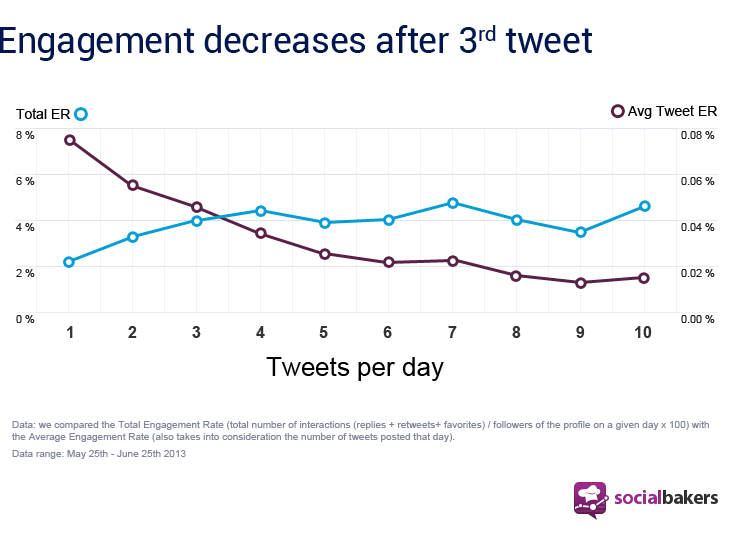
Writing copy for social media is simple if you stick to the 3 C's. These are: CTA, Pain point, active voice and Pain point. These tips will help you create a successful campaign. These guidelines can help you create social media copy and convert customers to buyers. There is much more to social media copy writing than meets the eyes. Keep reading to learn more! For increased conversions, make sure to use these tips for every post.
3 Cs rule
The three Cs of social media copywriting are consistency, creativity, concision. Concision is vital for a copywriting campaign, especially on social networks, where a limited number of characters is required. The use of hashtags is often misunderstood. While each social network may have its own best practices and guidelines, these are important things to remember when writing content.
It is important to understand your audience's preferences when using social media platforms. This will help you generate engagement and drive sales. Instagram is a visual platform that's great for sharing photos. Make sure you convey an emotional message in your captions. Barked posted a photo with puppies that was great for contextualizing his caption. Instagram users share photos so captions should be as emotional as physical products.
Active voice
The active voice is better than the passive voice for writing social media copy. The active voice describes an action, rather than the subject performing it. In other words, use action verbs and keep your sentences simple. This style will result in more compelling copy that attracts attention. Here are some ways to use active voice when writing social media copy.

When writing in the active voice, your subject is doing something, not the other way around. You might use the active voice if you're writing about an injury to a boy. People will be more likely to remember and understand the story. Sentences can be made shorter with active voice. It is essential to keep your copy concise and direct.
Pain point
The concept of a "pain point" is something you've likely heard before. You might be considering incorporating it in your social media marketing copy. These are areas that your target audience finds frustrating. Your products or services are supposed to ease these issues, but the problem is that these points can feel negative and manipulative. Here are some ways to include a pain point within your social media copy.
To make your copy more persuasive, you should focus on your customer's pain points. The most effective copy will focus on the customer's pain point, then offer a solution. You don't need to have a list of pain points. Instead, ask your client about what is making them unhappy. Write your copy around these points and you will create engaging social media copy.
CTA
Clear CTAs are essential for encouraging people to engage with your social media content. You can achieve clarity by eliminating unnecessary content and stripping the main message down to its essentials. Consider using one of the 401+ power words to make your CTA clearer. A time limit will encourage more responses. This method was used to promote Project CAT by The Food Network. It included a link to their site and a simple message encouraging people to click it.

When using a CTA in social media copy, make sure it follows a well-defined sequence. CTAs should reach different segments and guide your audience through your sales funnel. The best way to understand the needs of your customers is to create buyer personas. It is important to use language that reflects your campaigns' goals and what your product can offer them. Keep in mind that social media copy must reflect the goals of your campaigns. Your audience won't be interested in copy that tells them what they should do.
FAQ
What are the seven steps of content marketing
The content marketing process is seven steps long
-
Identify the problem
-
Learn what is working right now
-
Create new ideas
-
Use them to create strategies
-
Test them
-
You can measure the results
-
Keep going until you find the right solution.
This approach has been proven to work well for businesses large and small.
What Content Marketing Strategy is right for me?
A Content Marketing Strategy is perfect if you know exactly what you want to communicate.
If you are looking for some direction before starting, these are some questions:
Is it necessary for my business to communicate a specific message? Or do I want to create content that resonates with general audiences?
Do I want my efforts to convert visitors into buyers or generate leads?
Are you trying to promote one or multiple products?
Am I interested in reaching people outside of my industry?
A Content Marketing strategy is what you need if you answered "yes" any of these questions.
Why is a Content Marketing Strategy necessary? Why send emails and post updates on social media?
Two main reasons you might choose to ignore a Content Marketing Strategy.
-
You may believe that email marketing or social media posts will be enough to get people talking and sharing your brand's story.
-
You might think that posting on social media or email marketing is impossible if you haven’t tried it.
Both of these assumptions are wrong.
Email marketing and social networking posts can be great tools for communicating with customers and prospects. However, they aren't enough by themselves.
A single email campaign won't be enough to help you achieve your goals. An email campaign alone won't help you reach your goals. It must be part of larger strategies. You can't rely on social media to help you reach your goals. They should be part and parcel of an overall strategy.
This is where a Content Marketing Strategy can help. Creating a strategy that sets clear objectives for each piece of content allows you to manage your entire content creation process.
As a result, you'll be able to spend more time focusing on other essential aspects of running your business, like growing your audience and increasing conversion rates.
While there are many advantages to having a Content Marketing Strategy in place, it does not make it easy.
But, having a strategy in place makes all the difference.
What is the cost of hiring a content strategist to create content?
There are many agencies and freelancers that can provide content creation services at affordable prices. However, some companies prefer to pay more due to the expertise of the person handling the project.
What does Content Marketing look like?
When someone visits your site, they're looking for something specific. Great if they find what they are looking for. They'll go elsewhere if they don't find what they need. Content marketing allows you to create valuable and useful information that solves problems and answers questions. This content can be used across all platforms (social media and email). This ensures that everyone has access to the content.
How does Content Marketing Strategy help me?
Content Marketing Strategy provides you with access to data you don't normally have. This data allows to identify which types and content perform well.
It can help you decide which strategies are best to drive traffic to you site. It provides insight into your audience's behavior, which can help you create better content.
This means that you will be able to spend less time worrying over what type of content works and more on what doesn’t.
A Content Marketing Strategy can help you determine what messages resonate best with your audience.
You can find out their preferred content by analysing these messages. You can use the same content to keep your winning ideas going.
A Content Marketing Strategy can help you track the performance of your content. By sharing content, you will be able to easily identify which types of content converts better.
In short, a Content Marketing Strategy is the key to ensuring your content performs as intended.
Statistics
- Forty-seven percent of buyers view 3 to 5 pieces of content before engaging with a sales representative. (mailchimp.com)
- Progress indicators (0–100%) allow each team member to see how attainable each goal is and understand what remains to be accomplished. (semrush.com)
- According to our research, brand awareness, attracting traffic, and generating leads remain the key content marketing goals in 2022. (semrush.com)
- This marketing strategy landed Ford a 15.4% conversion rate. (neilpatel.com)
- We found that 40% of businesses don't have a documented strategy yet. (semrush.com)
- In fact, would pay more for a better customer experience, and 86% of B2B buyers would pay more. (neilpatel.com)
- Companies that use content marketing see approximately 30% higher growth rates than businesses not using it. (mailchimp.com)
- To further show the importance of this, 89% of people have stopped doing business with a company because of a poor experience. (neilpatel.com)
External Links
How To
How can I make my videos more impressive?
Video Marketing is one the most powerful tools in Content Marketing. This allows you to get in touch with your audience, build trust and engage them emotionally. How do we turn boring into awesome? Let's take a look at some easy tips!
-
Tell a story. Storytelling is the core of any communication. Video marketing cannot work without storytelling. If you want to tell stories, you must ask yourself what kind of stories you want to tell. Is it educational? Educational? Inspiring? Inspiring? Use these stories as inspiration to create your own.
-
Use images. Images can convey emotions more quickly than words. Images enable us to make connections with others, and allow us empathy. So don't forget to include images in your videos. You can embed images directly in your blog posts, or add them to your slideshows.
-
Make it easy for people to share. You want viewers to spread the word. Make it easy. Add sharing buttons to your videos. Your slideshows should include social icons. And if you're working on a YouTube channel, consider adding "Share" boxes to your videos.
-
Don't overdo it. If you have too many graphics and too much information, your viewer might lose interest. Keep it simple. A few striking images are all that is needed to grab your attention and keep you there.
-
Keep it short. People love to watch short videos. Make short videos, no more than 5 minutes, to build buzz around your brand.
-
Get feedback. Listen to what your audience has to say. Ask them about what works for them and what doesn’t. You can use the answers to improve your content.
-
A plan is essential. Once you've created your first video, think about how you can create more. Can you create a series? Maybe you can create a playlist with the most watched videos?
-
Test, test, test. It is not a good idea to release a video only to find out that no one watches it. Before releasing any video, test it on your audience. Check out the reactions. Make changes based upon these results.
-
Repeat. Repeat steps 1-8 until you find the perfect formula. Once you have a good idea of what works, it will be easy to create stunning videos.
-
Measure results. It is important that you measure the success of your videos. How did they perform? Is there a certain type of audience that likes watching particular types of videos? These questions will help to refine your strategy.
-
As needed, adjust. Once your video campaign has launched, don't stop learning. Learn from your failures and adapt your plans accordingly. The best marketers always look for ways to improve.
-
Enjoy it. Video marketing isn't hard, but it does take patience. You will learn new strategies, techniques and ideas as you gain experience to help you grow your company.